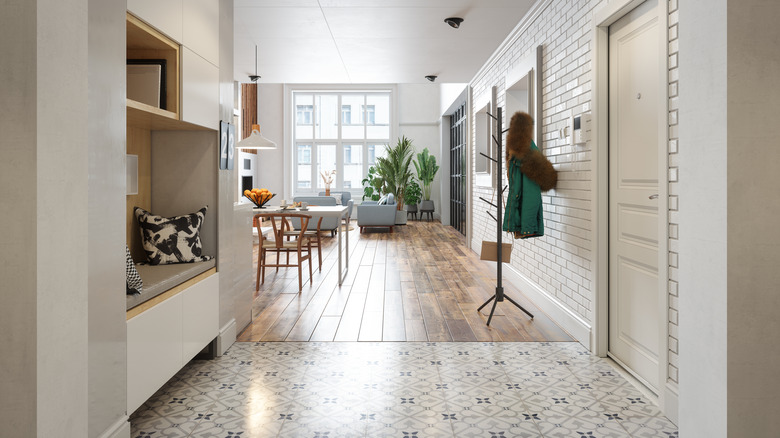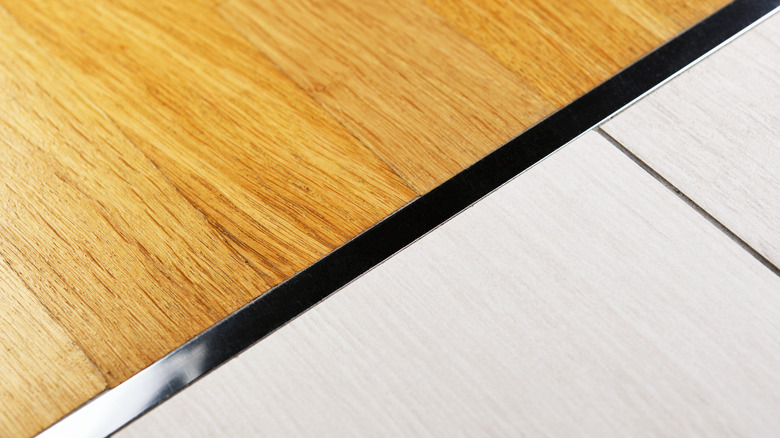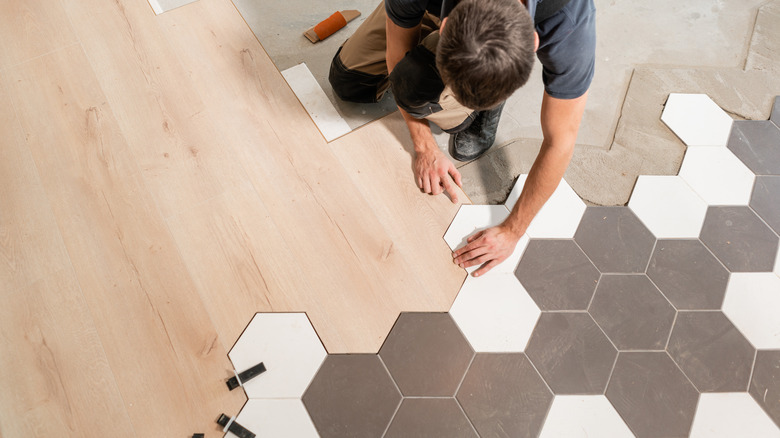The Best Ways To Meet Two Different Flooring Materials In Your Home
A major way to maintain cohesion throughout a home is to have the same flooring in all rooms, but this isn't always practical because floor types have different purposes, strengths, and weaknesses. Moreover, different rooms have different usage patterns and requirements, from high-traffic areas like the kitchen to cozy spaces like the bedroom. It's crucial to know the limits of your desired flooring materials and be open to choosing floors more on a room-to-room basis. As you choose different floors, you need to factor in how they work together, especially in two connecting rooms. The best ways to do this are to use transition strips and stay within the home's cohesive color palette.
Various types of flooring materials can be used in a home. You might have carpets where you need a soft, comfortable surface for the feet, and hardwood or tiles in another where you need to clean it easily. Maintaining the same color theme as the rest of the house and using transition strips or molding when necessary will help a lot to smoothen the transition both physically and visually.
Practical considerations
When two different flooring materials have to meet at a certain point, you need to think about how it would physically feel to move between both rooms. There might be a height difference between the materials or an awkward gap which can pose a safety problem or trip hazard. You can easily address this problem by installing a transition strip to close the gap and ensure safer and more comfortable movement between both rooms.
Transition strips and moldings also help the flooring materials. Some flooring materials, like solid hardwood, need additional space at the edges of the room because they expand and contract, so a transition strip helps fill that gap. Look for transition materials that suit the floor types you have and the main transition issue you want to address. flooring height differences, at the point between a kitchen and a living room, for example, need to be accounted for, too. Some common transition strips for this area are reducers, T-moldings, and multi-function moldings.
Style considerations
The best way to meet two different flooring materials in your home is to ensure that the transition is visually appealing and complements the overall design of the space. Do this by maintaining a consistent color palette and using complementary tones. They don't have to match exactly, but they can be in similar colors and shades. They should blend into each other as much as possible instead of creating a glaring contrast. Neutrals, as opposed to strong colors, are great for this. The transition strips or molding should also blend well with the colors of the flooring to secure that smooth visual transition between the two materials.
Conversely, you might want to intentionally create a visual clash when transitioning between different floor materials in order to make a statement. This can be done to map out a specific zone within a room or to simply do something different with the space. In this case, there aren't really any rules, and there's a lot of creative freedom as you can combine different colors, patterns, and textures to achieve your goal.



